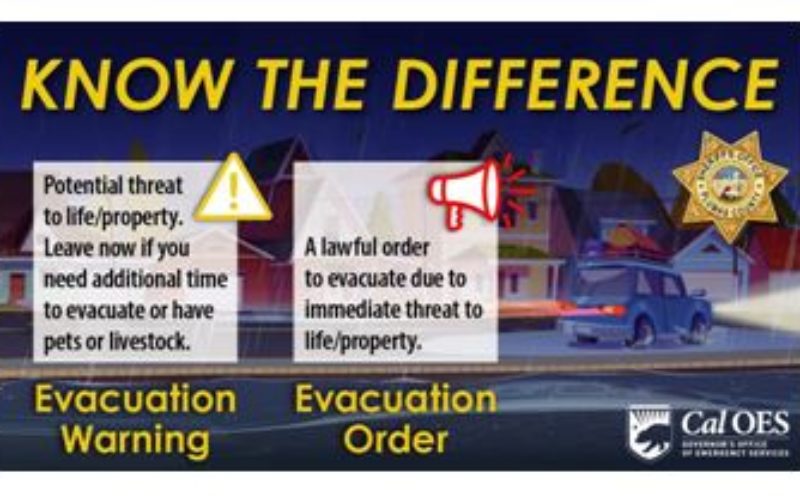Community Alert: Understanding Emergency Evacuation Orders

Photo: Photo provided by Plumas County Sheriff’s Office
In the event of a natural disaster, it’s essential to understand the difference between an evacuation warning and an evacuation order to ensure your safety and the safety of your loved ones.
An evacuation warning means that there is a potential danger to your life or property, and you should be prepared to leave at a moment’s notice. If a warning is given, it’s crucial to assume that an evacuation order will follow shortly after. You should start gathering important items for your family and pets and prepare to evacuate as soon as possible.
If you have any individuals in your household who need extra time to evacuate, or anyone with large animals, it’s important to pack up and leave when a warning is issued. By doing so, you will avoid any potential traffic congestion or other obstacles that may arise if an evacuation order is given.
An evacuation order means that there is an immediate threat to your life, and you need to leave right now. It’s critical to follow all directions from law enforcement and emergency personnel to ensure you and your family evacuate safely. You should have an emergency evacuation plan in place and know the fastest route to safety.
When an evacuation order is given, it’s essential to remain calm and focused. You should grab your emergency supply kit and other important documents, including identification and insurance papers, and head out immediately. If you have pets, make sure they are in carriers or on leashes and have enough food and water for the journey.
During an evacuation, it’s important to keep your radio or television tuned to a local news station for updates and instructions. If you have time, it’s also a good idea to let family and friends know where you are going and how to contact you.
In summary, an evacuation warning means that there is a potential danger to your life or property, and you should be prepared to evacuate. An evacuation order means that there is an immediate threat to your life, and you need to leave right now. By understanding the difference between these two terms and having an emergency plan in place, you can help ensure the safety of yourself and your loved ones during a natural disaster.















